The Future of AI in Electronics Manufacturing
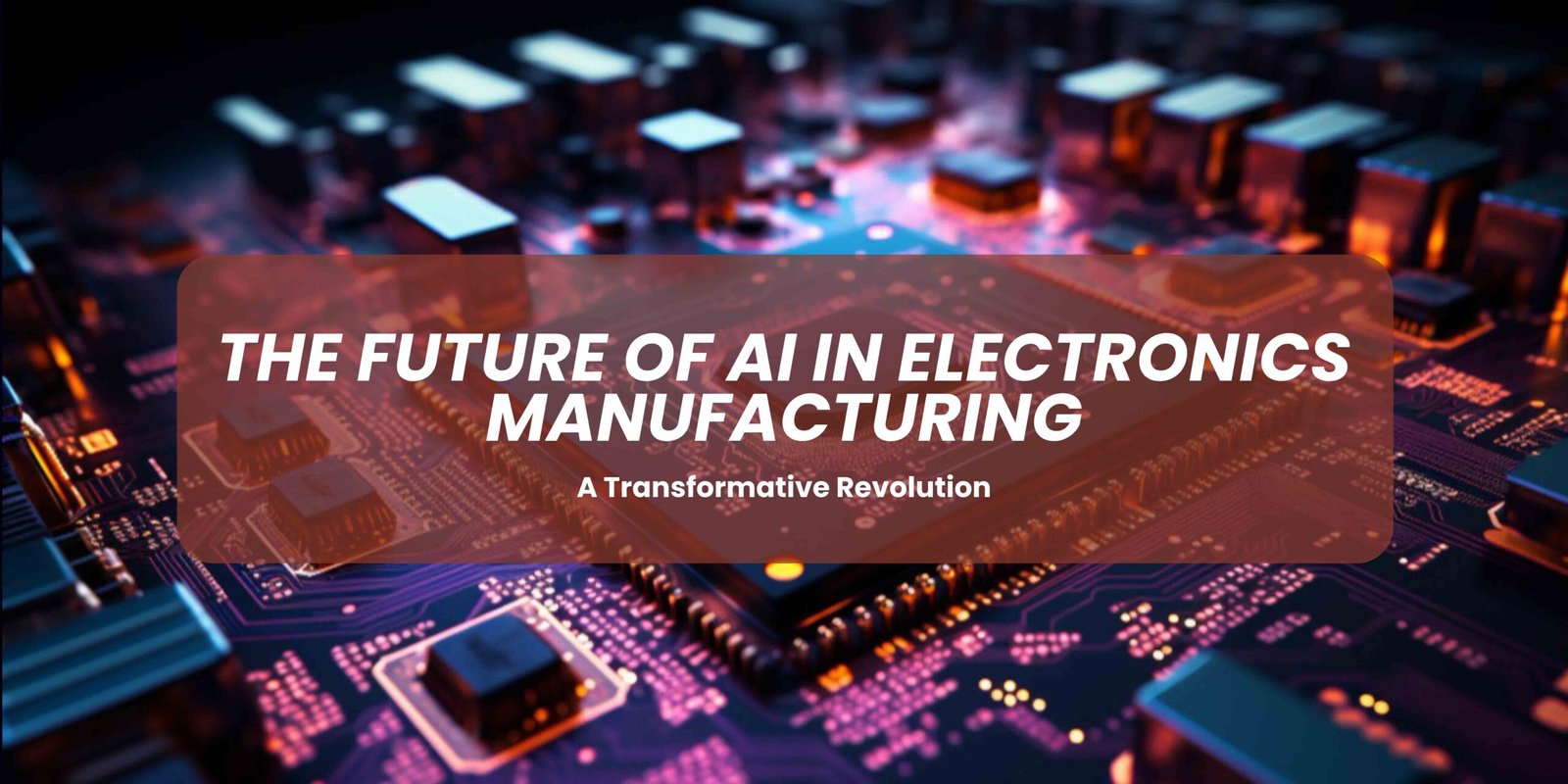
The digital devices that power our lives – from sleek smartphones to life-saving medical equipment – depend on the intricate world of electronics manufacturing. This industry is on the cusp of a profound technological shift. Artificial Intelligence (AI) isn’t merely automating tasks; it’s redefining how we design, produce, and deliver the electronics that shape our world.
The future of AI in electronics manufacturing isn’t a distant possibility – it’s happening now. AI algorithms are optimizing production lines with unprecedented efficiency. It’s as if manufacturing processes now have a digital brain identifying patterns and suggesting solutions that would be impossible for humans alone to see. Think of it like a master chess player, but instead of moving on a board, it’s analyzing thousands of data points to achieve the most efficient result.
This revolution extends beyond mere efficiency. AI-powered systems are keeping complex machinery running smoothly, preventing costly breakdowns with predictive maintenance. Quality control is no longer limited by the human eye. Computer vision systems tirelessly scan circuit boards, catching the tiniest defects that could compromise a device. On the global stage, AI is helping navigate complex supply chains, forecasting demand changes, and ensuring that the right components arrive in the right place at the right time.
The future of AI in electronics manufacturing is about more than just streamlining processes. It’s about unlocking innovation. It’s about lighter, more powerful devices, and about pushing the limits of what electronics can do. This transformation may be driven by algorithms and data, but ultimately, it’s about people — engineers, technicians, and visionaries — taking advantage of AI’s power to create the technologies that will define our tomorrow.
AI-Driven Process Optimization: The Heart of the Transformation
In the future of AI in electronics manufacturing, optimizing processes is where this technology truly shines. AI’s ability to analyze mountains of production data is a game-changer. These intelligent systems uncover hidden patterns within the data, revealing inefficiencies and pinpointing areas for improvement.
Consider surface-mount technology (SMT), a core process where components are placed on printed circuit boards. AI-powered systems analyze every aspect – component sizes, board layouts, and thermal factors. The result? Optimized placement plans that maximize efficiency. Error rates drop, and manufacturers see a significant boost in production yield.
This same principle applies across the board. AI helps identify the perfect machine settings to minimize defects or can predict when a component is about to fail, allowing for preventative action. This data-driven approach isn’t just about saving time and money; it leads to a deeper understanding of the manufacturing process itself. In the future of AI in electronics manufacturing, continuous optimization becomes the norm, empowering manufacturers to stay ahead of the curve in an ever-competitive market.
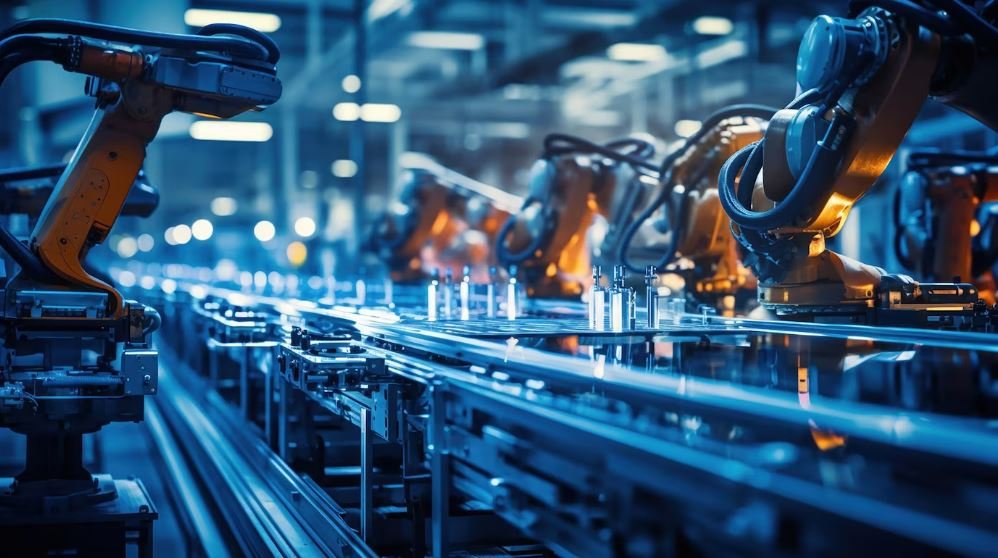

The Rise of Predictive Maintenance with the Future of AI in Electronics Manufacturing
In the realm of electronics manufacturing, downtime is a costly enemy. Unplanned breakdowns can disrupt production schedules, create backlogs, and lead to missed deadlines. Artificial Intelligence (AI) is poised to change this paradigm with the ascendency of predictive maintenance.
Traditional maintenance approaches have largely been reactive – fixing problems after they occur. AI flips the script. By harnessing the power of machine learning, AI algorithms can analyze sensor data from manufacturing equipment, such as vibration patterns, temperature readings, and energy consumption. These algorithms identify subtle anomalies that indicate a potential failure is on the horizon.
This predictive power is transformative. Technicians receive alerts well before a critical failure occurs, allowing them to schedule maintenance during planned downtime windows. This minimizes unscheduled disruptions and keeps production lines humming.
The benefits are tangible:
Reduced Downtime: Avoiding breakdowns increases overall equipment uptime and greater manufacturing output.
Lower Maintenance Costs: Proactive maintenance reduces the need for emergency repairs and expensive part replacements.
Extended Equipment Lifespan: By catching issues early, AI helps prevent catastrophic failures that shorten a machine’s useful life.
As AI in electronics manufacturing continues to evolve, predictive maintenance will become even more sophisticated. Algorithms will incorporate historical data, real-time operating conditions, and even external factors to provide highly accurate predictions. This will further optimize maintenance schedules and drive even greater efficiency gains within the manufacturing sector.
Quality Control Gets a Vision Upgrade with the Future of AI in Electronics Manufacturing
In the realm of electronics manufacturing, guaranteeing the highest standards of quality is crucial. Imperfections, even minuscule ones, can lead to product failures and costly consequences. This is why AI is reshaping the landscape of quality control, particularly through the power of computer vision.
AI-powered computer vision systems are revolutionizing this process. These systems utilize high-resolution cameras and sophisticated algorithms to pinpoint defects undetectable to the human eye. They can tirelessly scan for anomalies in the surface of components, misalignments that can compromise functionality or soldering flaws that risk future breakdown.
This hyper-accurate inspection occurs at incredible speeds, analyzing thousands of units in the time traditional methods would take for a fraction of that number. This not only drastically improves quality assurance, but it reduces the risk of expensive recalls or damage to a brand’s reputation.
The future of AI in electronics manufacturing promises even greater capabilities. Imagine AI systems that don’t simply detect flaws, but learn to pinpoint the root cause within the production process. They could predict potential failures before they happen, driving preemptive quality improvements throughout the entire manufacturing line. This level of intelligent automation positions electronics manufacturing at the forefront of quality excellence.
Smart Supply Chain Management.
Within the broader theme of “The Future of AI in Electronics Manufacturing,” AI’s impact on supply chains promises to be a game-changer. Today’s electronics manufacturing relies on complex global networks of suppliers. Disruptions ripple through the chain with costly consequences. AI is transforming this landscape.
Imagine AI systems that analyze massive datasets incorporating everything from raw material availability to geopolitical events and even weather patterns. This allows for incredibly accurate demand forecasting, avoiding both stock shortages and warehouses full of unused components. AI-powered tools optimize inventory levels, not just based on history but using real-time data and predictions.
The result? Manufacturers can react with unprecedented agility to market shifts. AI can pinpoint alternative suppliers when problems occur, simulating scenarios to choose the best path for maintaining production. Gone are the days of costly “expedited” fees and lost production time.
AI-driven smart supply chain management means greater resilience in a volatile world. It makes possible the cost savings, customer satisfaction, and the ability to seize new opportunities that will define successful electronics manufacturers in the future.
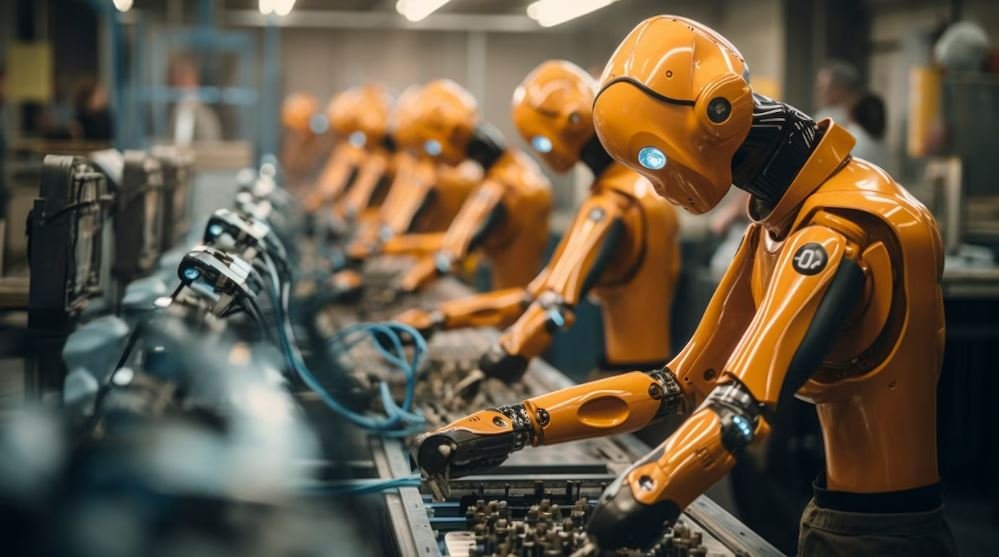
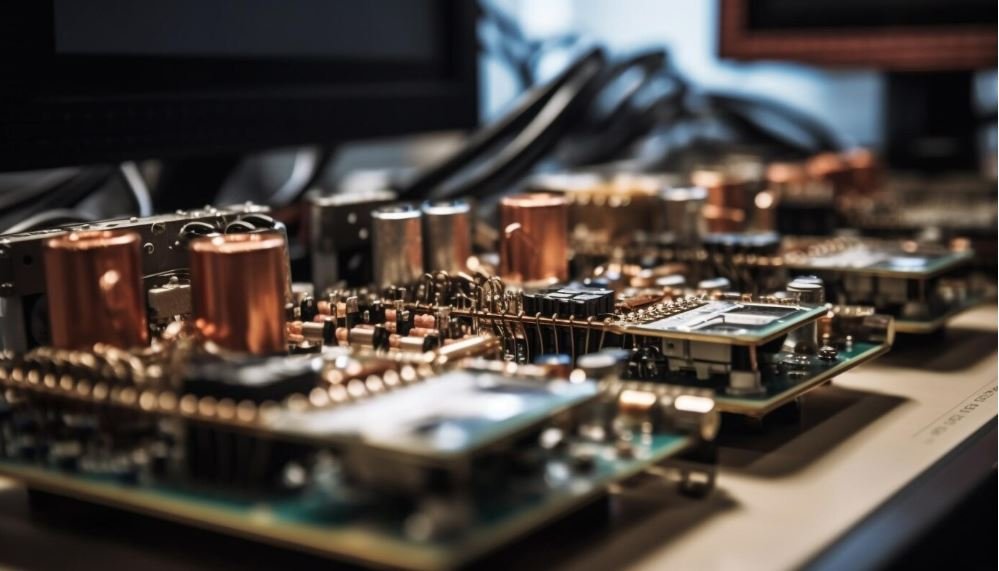
The Age of Collaborative Robots with Future AI
We’re entering an era where collaborative robots, or cobots, will reshape factory floors. These robots aren’t the isolated, caged machines of old. Cobots are designed to work safely and directly alongside humans, opening up new possibilities within the complex world of electronics manufacturing.
The rise of cobots is closely tied to advancements in Artificial Intelligence. Traditionally, robots needed extensive programming for specific tasks. AI is changing that. AI-powered cobots can learn from demonstrations, adapt to variations in components or processes, and intelligently handle unexpected situations. This adaptability is crucial in the ever-evolving landscape of electronics production.
The blending of cobots and AI within “The Future of AI in Electronics Manufacturing” paints a compelling picture:
- Assembly Assistance: Cobots equipped with vision systems and intelligent grippers can work with humans on intricate assembly tasks, improving precision and speed.
- Adaptable Production: AI allows cobots to switch seamlessly between tasks, handling smaller production runs and customization requests with ease.
- Quality Enhancement: Cobots can take on inspection roles, their AI-driven vision systems ensuring even the smallest flaws are detected.
- Worker Empowerment: Instead of replacing humans, cobots relieve workers of repetitive, ergonomically challenging tasks, allowing them to focus on higher-value activities.
The age of collaborative robots powered by AI is just beginning. It promises a future of electronics manufacturing that is more flexible, efficient, and focused on human-machine synergy.
The Future Is Now: Embracing AI-Driven Innovation
The impact of AI on electronics manufacturing is just the beginning. As AI algorithms continue to evolve and computational power increases, we can expect even more transformative applications:
Hyper-customization: AI will facilitate the cost-effective production of highly customized electronic products tailored to individual needs. From personalized medical devices to adaptive consumer electronics, AI-driven manufacturing will cater to unique demands.
Self-healing Electronics: We may soon witness electronic devices with self-healing capabilities thanks to AI. Using advanced sensors and algorithms, these devices could detect and repair damage, extending their lifespan and reducing waste.
AI-Powered Design: AI-powered design tools will go beyond optimization, becoming true collaborators with engineers. These tools will suggest novel concepts, simulate performance in real-world scenarios, and push the boundaries of electronic device capabilities.
Sustainable Manufacturing: AI’s ability to optimize processes and resource usage will be key for sustainable electronics manufacturing. It will analyze energy consumption patterns, minimize waste, and drive the development of eco-friendly materials.
The future of AI in electronics manufacturing is one of limitless innovation and transformation. By embracing AI, manufacturers will not only boost efficiency but also create a new generation of intelligent, personalized, and sustainable electronics that reshape our world.


Navigating the Challenges with the Future of AI in Electronics Manufacturing
While the future of AI in electronics manufacturing is incredibly promising, successfully navigating its implementation does present challenges. It’s crucial to address these head-on to reap the full benefits of AI integration.
The Need for Quality Data: AI thrives on massive amounts of accurate data. Manufacturers must invest in infrastructure for collecting, storing, and managing this data. This may involve installing sensors, implementing data governance policies, and ensuring data integrity.
Addressing Workforce Concerns: A common misconception is that AI will replace jobs. Instead, the focus should be on upskilling the workforce to work alongside AI systems. Training programs that teach employees to understand and use AI tools will create a more collaborative and productive environment where workers and AI complement each other’s strengths.
The Ethical Dimension It’s critical to implement AI solutions responsibly. Systems should be designed to avoid bias, promote fairness, and protect privacy. Transparency in how AI algorithms make decisions will be crucial to building trust and ensuring the ethical use of this technology.
These challenges, though significant, aren’t insurmountable. By proactively investing in data infrastructure, workforce training, and responsible AI principles, manufacturers can harness the full power of the future of AI in electronics manufacturing. This will drive unprecedented innovation and competitiveness in the industry.
F&Qs
A: Currently, the most widespread AI applications include process optimization, predictive maintenance, quality control using computer vision, and supply chain management optimization.
A: There are several ways:
- Start with a specific problem: Identify a bottleneck or pain point in your production process that might be improved with AI.
- Leverage cloud-based AI solutions: Many platforms offer pre-built AI models and tools specifically tailored for manufacturing – this lessens the need for in-house data science expertise.
- Focus on data collection and quality: AI depends on good data, so start investing in collecting data from your machines and processes.
A: Some common barriers include:
- Cost of implementation: AI projects can have initial setup costs.
- Lack of skills: Finding experts in AI and manufacturing isn’t always easy.
- Data quality and availability: AI systems often need large amounts of clean, structured data to be effective.
A: AI will augment rather than replace workers. It automates repetitive tasks, freeing up workers for more strategic and creative work. Investing in upskilling the workforce to work alongside AI technologies will be key.
A: You’ll need a blend of domain expertise in electronics manufacturing and data science skills. Collaboration between engineers, data scientists, and IT specialists is key to successful AI projects. External consultants and service providers can help fill knowledge gaps as needed.
A: Definitely! AI can optimize energy consumption in manufacturing processes, reduce waste through improved quality control, and help design products that are easier to recycle or repair, extending their lifespan.
A: Like any powerful technology, AI raises important concerns. These include ensuring data privacy, minimizing bias in AI algorithms, and addressing potential job displacement. Manufacturers must use AI responsibly and transparently to maintain trust and avoid unintended consequences.
A: Explore industry publications, attend trade shows and conferences focused on AI and manufacturing, and consider reaching out to professional organizations or technology providers specializing in this field.





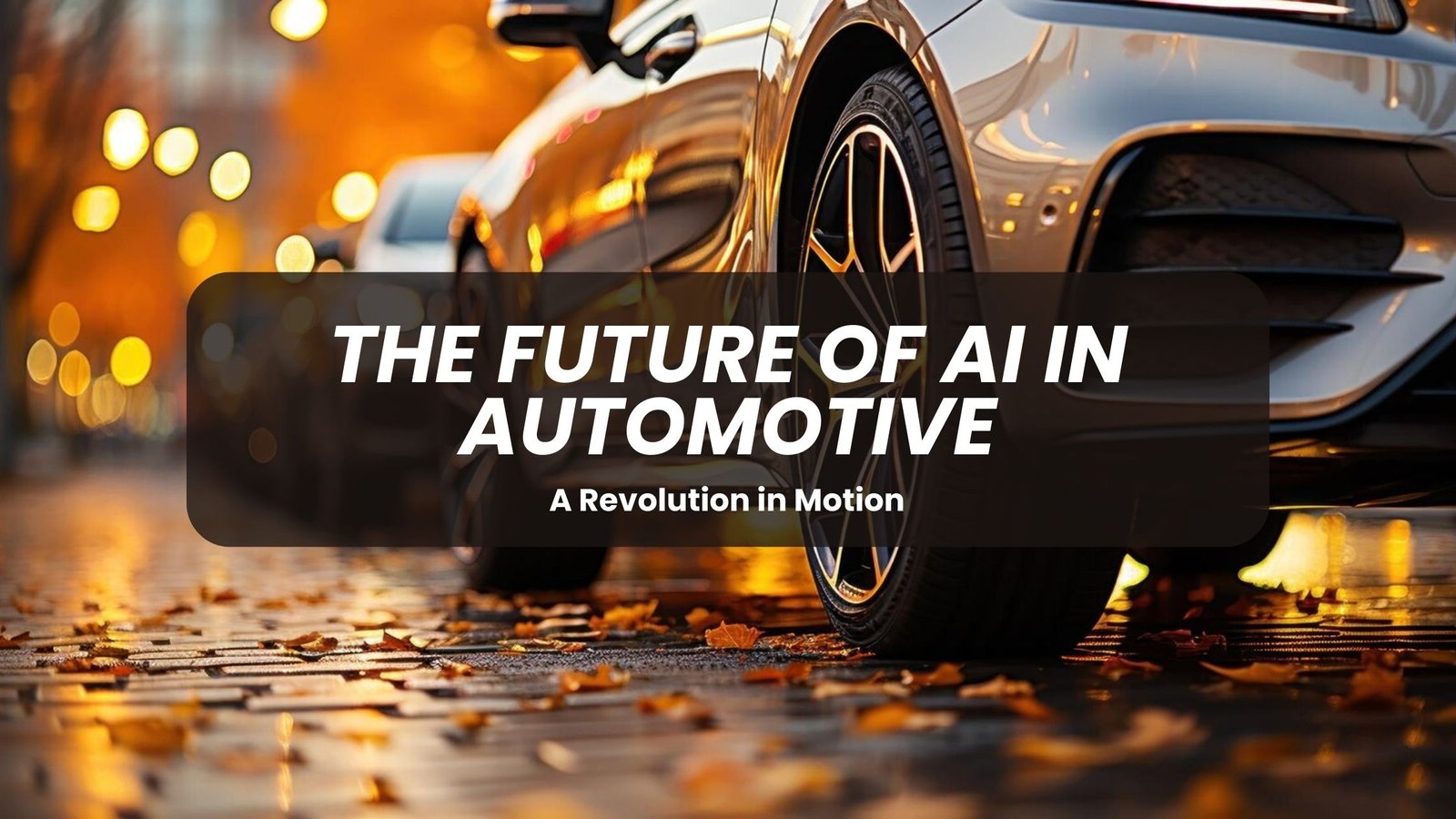



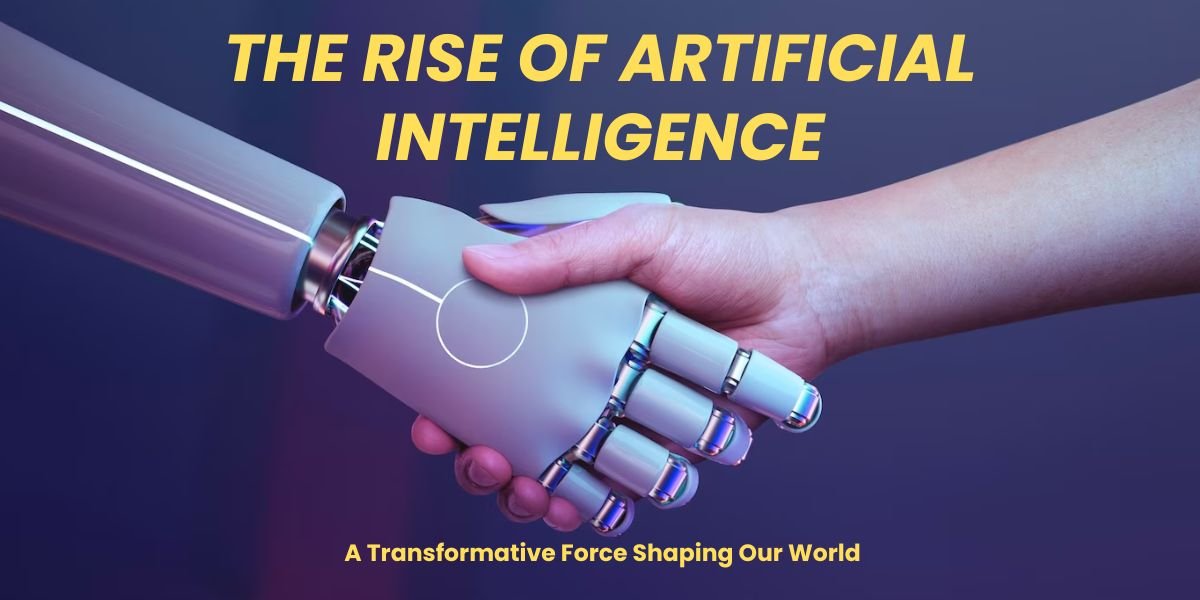



Pingback: The Future of AI in Automotive: Efficiency, Safety, and Convenience - Meepri